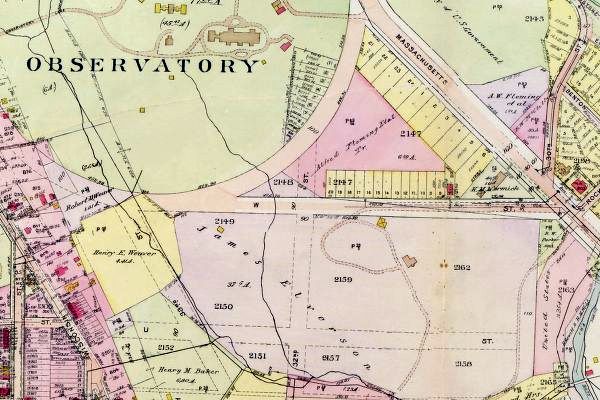Category Normanstone

The Myths of the British Embassy I: the Location before Lutyens
There persists the unfortunate belief in some publications that in the 1920s the government of the United Kingdom chose a remote site with “little civilization nearby” for their new Washington Embassy. While the British with their previous diplomatic building pioneered the countryside around Connecticut Avenue—with livestock pens and crumbling Civil War barracks for neighbors—that is […]

The Embassy Gardens and Dumbarton Oaks
With the ridge of Clifton Hill between them, the British Embassy and Dumbarton Oaks have a shared legacy and stories, the memory of which has nearly been lost over the years. The original 19th-century estates of both sites were once part of the same Royal land grant, the Rock of Dumbarton. Before each gained renown, […]

What Remains of the Nineteenth Century
Not much remains of the earlier pastoral landscape. Located most likely where Lutyens’s complex, along with Eric Bedford’s New Chancery (1955-1962), now dominates, all traces of Normanstone’s buildings are gone, surviving only in photographs, maps and the family records. However there are echoes of Normanstone’s sloping terrain, streams, farm roads, orchards and that gardening was […]

The Development of “Massachusetts Avenue Extended”
Robert Barnard’s original property, the site of the British Embassy, remained intact for almost eighty years; its breakup began with rapidly rising land values and the expansion of the United States Government’s domain in the post-Civil War era. The story is simply told in a series of maps, surveys and real estate plat books. The […]

Wine and Computers: The Surprising Washington Origins of Two Industries
Normanstone’s near neighbor came to be the seventy-six acres of Northview, purchased by Cornelius and Margaret Barber in 1834, located where the Naval Observatory complex now spreads. Margaret was the daughter of Revolutionary War veteran, land surveyor and horticulturist John Adlum, the author of the first book on indigenous American viticulture (1823). Adlum’s own estate, […]

The Landscape Before the Embassy
Around 1820, an immigrant from England, Robert Barnard, purchased twenty-four acres in the original ‘Pretty Prospects’ Maryland land grant, part of the older (surveyed in 1702), much larger property, ‘The Rock of Dumbarton.’ The tract, ‘Normanstone’, desirable land on beautiful and high ground overlooking the heights of Georgetown towards the Potomac River, was big enough […]

Recent Comments